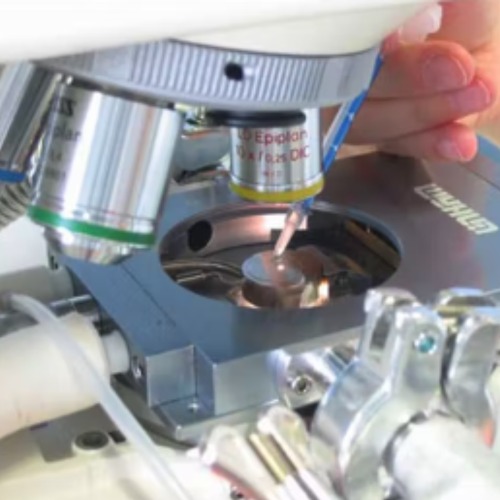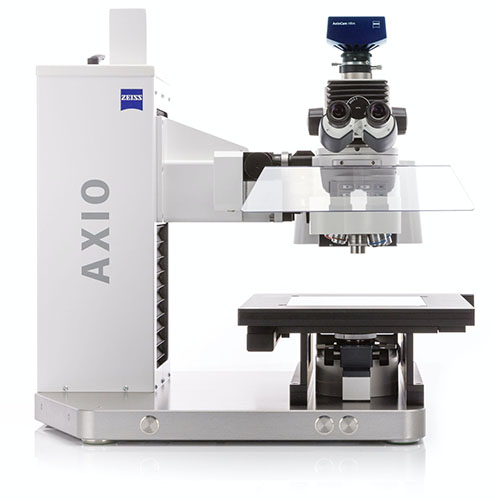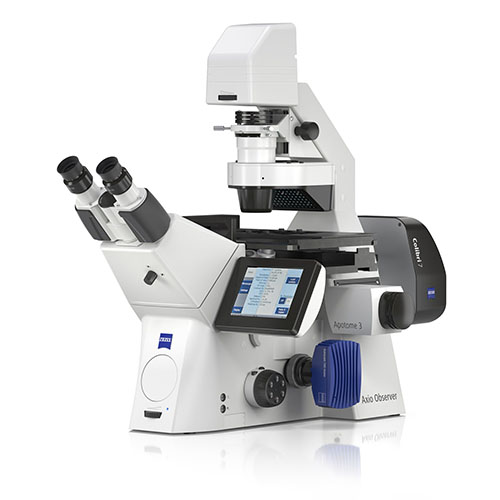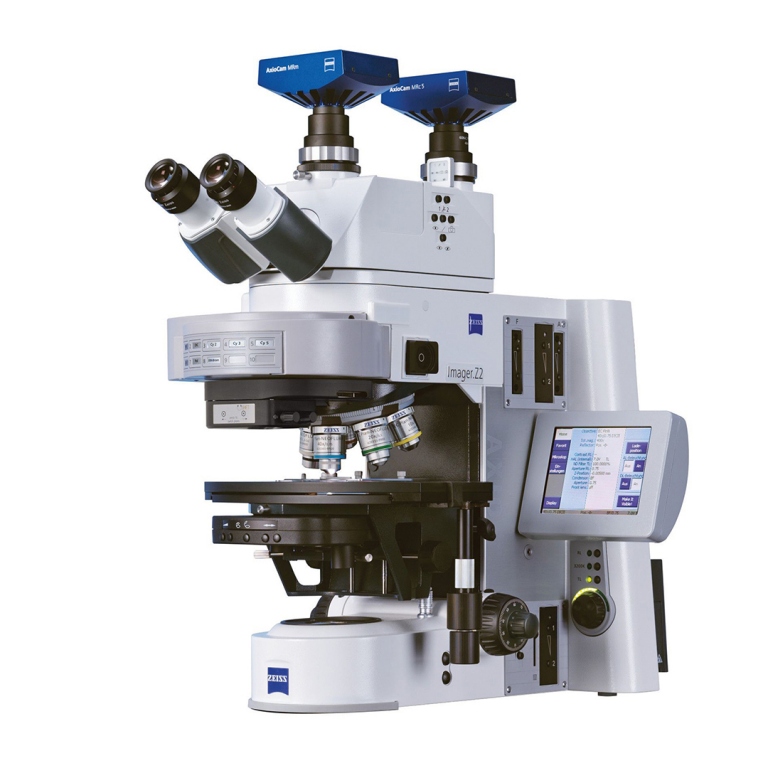
ZEISS Axio Imager 2 for Materials
Elevate Your Materials Research with the Open Microscope System for Automated Analysis. Precision meets automation in every detail.
The ZEISS Axio Imager 2 for Materials is at the forefront of advanced microscopy, setting new benchmarks in the realm of materials research. Engineered with a modular design, it offers unparalleled adaptability to cater to diverse research needs. Coupled with high optical performance, it ensures crisp and detailed imagery every time. Beyond its impressive visuals, the Axio Imager 2 stands out by consistently delivering reproducible results, making it an invaluable tool for professionals who demand both precision and reliability in their analytical pursuits.
At Nuhsbaum, we’re proud to introduce the ZEISS Axio Imager 2 for Materials—a microscope meticulously designed for professionals in the materials research domain. This system heralds a blend of cutting-edge technology and user-centric design, tailor-made for those who won’t settle for anything less than excellence in their work.
The Axio Imager 2 is not just a microscope; it’s an integrated solution. With its modular design, it presents researchers with an adaptability that’s rarely seen in the market, allowing for customization based on the specific needs of the project at hand. This modularity ensures the system remains future-proof, ready to accommodate advancements or additional functionalities as required.
But what truly sets it apart is its emphasis on precision and clarity. Its high optical performance guarantees that every image captured is of impeccable quality, with fine details rendered beautifully. For researchers, this means less guesswork and more concrete data.
Reproducibility is a core challenge in materials research, and the Axio Imager 2 rises to the occasion. Its sophisticated design and technology ensure that results are not just accurate, but also consistent across repeated experiments, making it a trusty ally in any lab.
Experience the new standard in materials microscopy with the ZEISS Axio Imager 2, now available at Nuhsbaum.
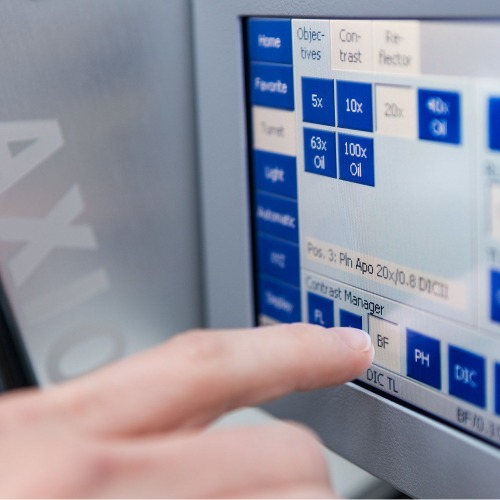
ZEISS Axio Imager 2 for Materials Contrast Methods
- Brightfield: This is the standard microscopy technique, where a sample is observed against a bright background. It’s especially useful for stained samples.
- Darkfield: In darkfield microscopy, the specimen appears bright against a dark background. It’s beneficial for observing samples that are not easily visible in brightfield, such as transparent specimens.
- Differential Interference Contrast: DIC uses optical components to visualize gradients in specimen refractive index, rendering them as variations in brightness. It offers a pseudo-3D view of the sample, highlighting its topographical features.
- Polarized Light: By using polarizing filters, this method examines birefringent materials. It’s particularly useful for studying crystalline structures and materials with specific optical properties.
- Fluorescence: This technique uses high-intensity light to excite fluorophores in the sample, which then emit light at a different wavelength. It’s commonly used in biological research, but it’s also beneficial for specific materials research.
- Phase Contrast: This method enhances the contrast of transparent and unstained specimens. It’s mainly used in biology, but it might also have applications in materials science, particularly for transparent materials.
- Reflectance: This method captures images based on light reflected from the specimen surface. It’s mainly used for opaque or reflective materials.
ZEISS Axio Imager 2 for Materials Key Features
Ergonomics:
- Adjustable Interfaces: The Axio Imager 2 is designed with user comfort in mind. It often features adjustable eyepieces and viewing angles to ensure comfortable usage for extended periods.
- User-friendly Controls: Intuitive controls, easily reachable, reduce user fatigue and streamline workflow.
- Ergonomic Stage Design: With both manual and motorized options, the stage is optimized for smooth sample maneuvering.
Thermomicroscopy:
- Integrated Temperature Control: This feature allows for the observation of samples at varying temperatures, which can be crucial for specific materials that change properties with temperature.
- Heat-Resistant Objectives: Designed to withstand high temperatures, these objectives facilitate the study of heat-treated or heat-sensitive materials.
- Temperature Gradient Monitoring: Some setups allow for the study of how materials change across a temperature gradient, providing richer insights.
Advanced Imaging:
- High-Resolution Cameras: Capture detailed images, essential for materials research where minute details can influence results.
- Modular Design: Allows for adaptability and customization based on research needs, ensuring that the microscope can handle diverse applications.
- Multimodal Imaging: Incorporate multiple contrast methods, ensuring that the microscope can visualize a wide range of sample types and details.
Integrated Software Solutions:
- Image Analysis: Advanced software integrations often allow for real-time image analysis, measurements, annotations, and more.
- 3D Imaging: Certain configurations can capture and reconstruct 3D images of samples, offering more depth of information.
- Diverse Contrast Methods: Including but not limited to Brightfield, Darkfield, DIC, Polarized Light, Fluorescence, Phase Contrast, and Reflectance.
- Stable Frame & Vibration Damping: Ensures that external disturbances do not compromise the quality of the observations, especially at high magnifications.
